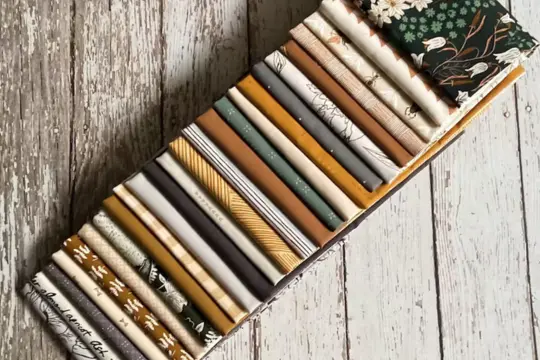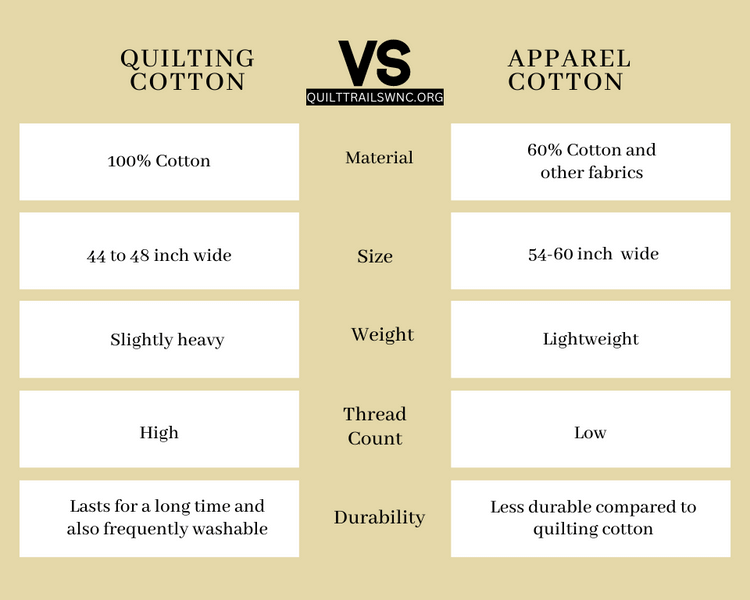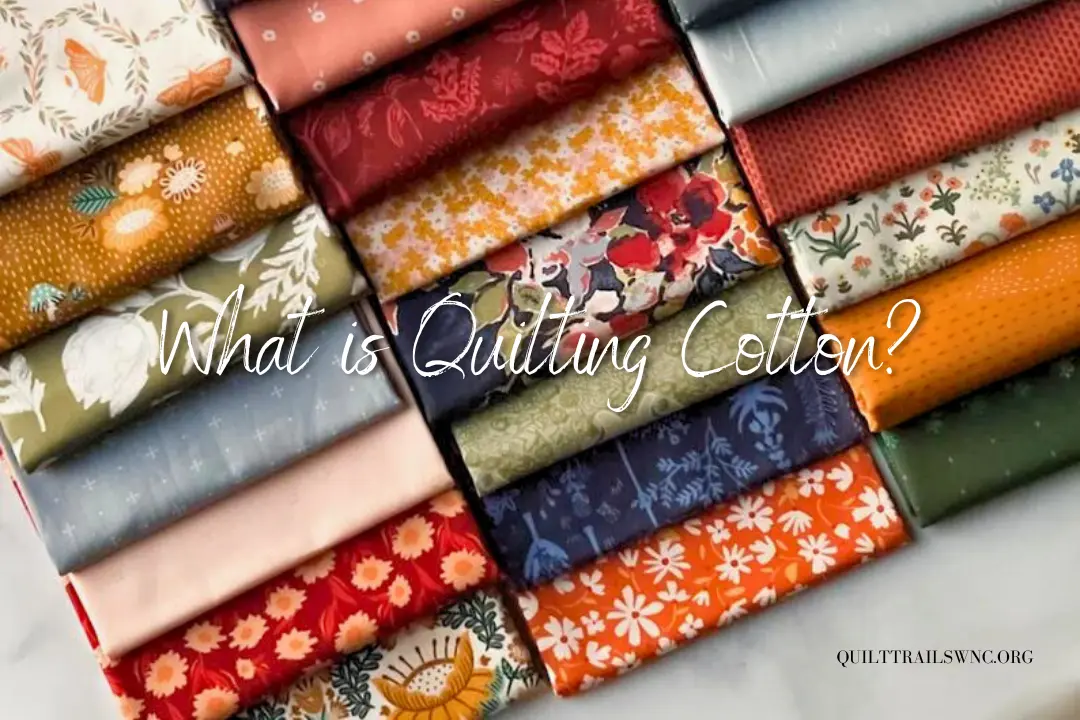Quilting cotton is a type of cotton specifically manufactured for quilting and is made out of 100% cotton. The fabric is mid-weight and dense and features a plain weave pattern.
The extra thickness allows it to last longer despite repeated washings. The stiff edges also prevent fraying. The thread count of quilting cotton can range from 60-200 per inch depending on the quality.
How Much Does Quilting Cotton Weigh?
The average weight of a piece of heavy-weight quilting cotton fabric is approximately six ounces. Meanwhile, a yard of lightweight quilting cotton fabric may weigh around 4 to 5 ounces.
The thread count of the fabric will be a significant factor in this decision. A lower thread count results in a lighter weight. As the thread count increases, the material will become heavier.
Identifying Quilting Cotton

There is a difference between quilting cotton and apparel cotton. So make sure you check whether your cotton fabric is quilting cotton or apparel cotton.
Quilting cotton is generally heavier than apparel cotton due to its higher thread count. The levels may not always display the tread count, and even if they do, that may not be accurate since many brands cheat on their customers. As you cannot count it with an eye, there are some simple tricks that you can use to identify it.
Hold the fabric up to the light and see if you can see through it easily. It indicates a low thread count. It is also a good idea to drape test the fabric by unrolling the bolt a bit and draping it. If it hangs in a straight line from the bolt, then you’ve got the right quilting cotton since quilting cotton tends to be stiffer and denser than soft apparel cotton.
Differences Between Quilting Cotton and Apparel Cotton

Even though quilting cotton and apparel cotton may seem similar to the naked eye, there are some differences that set them apart. For example,
Size
There is a difference in size between quilting cotton and apparel cotton. The most common width of quilting cotton is 44 to 45 inches, whereas the width of apparel cotton is typically 54 to 60 inches.
Weight
Apparel cotton weighs significantly less than quilting cotton, which is why apparel cotton is lightweight. The same cannot be said about quilting cotton because it is heavy.
Thread Count
A quilting cotton’s thread count is what distinguishes it from apparel cotton. A quilting cotton will have a thread count of 60-200 per inch while an apparel cotton will have a thread count of less than that.
Durability
As compared to apparel cotton, quilting cotton’s extra thickness makes it a more durable fabric, which can be washed frequently.
FAQs
Can I Use Quilting Cotton Fabric to Make Clothing?
The answer is yes, you can make clothing from quilting cotton. It is possible to sew clothing from any fabric that you desire, depending on what results you want.
How to make quilting cotton soft?
It is possible to slightly soften quilting cotton by pre-washing and drying it first. Upon doing so, any sizing will be removed and the fabric will become softer. Alternatively, you can soak the fabric in fabric softener to make it softer.
Should you prewash quilting cotton fabric?
If you are using quilting cotton to make a quilt, prewashing and drying it is not necessary, but if you are using the fabric to make clothing, you should definitely do so.
Does Quilting Cotton Shrink?
Yes, quilting cotton shrinks, just like all cotton fibers. As a natural fiber, they can loosen up quite easily when heated too much.
Can You Use Quilting Cotton for Curtains?
Yes, you can use quilting cotton for curtains. However, since quilting cotton is thicker and has a higher thread count, it may not allow sunlight to pass through, making your room darker. Direct exposure to sunlight may also fade the colors of the fabric.
Does Quilting Cotton Bleed?
It is unusual for quilting cotton to bleed out, but why take the risk? A pre-wash will remove any excess dye from the material. In case you are washing them in bulk, make sure to wash them in similar colors just to be on the safe side. Ensure that the water temperature is normal as well.

Leave a Reply